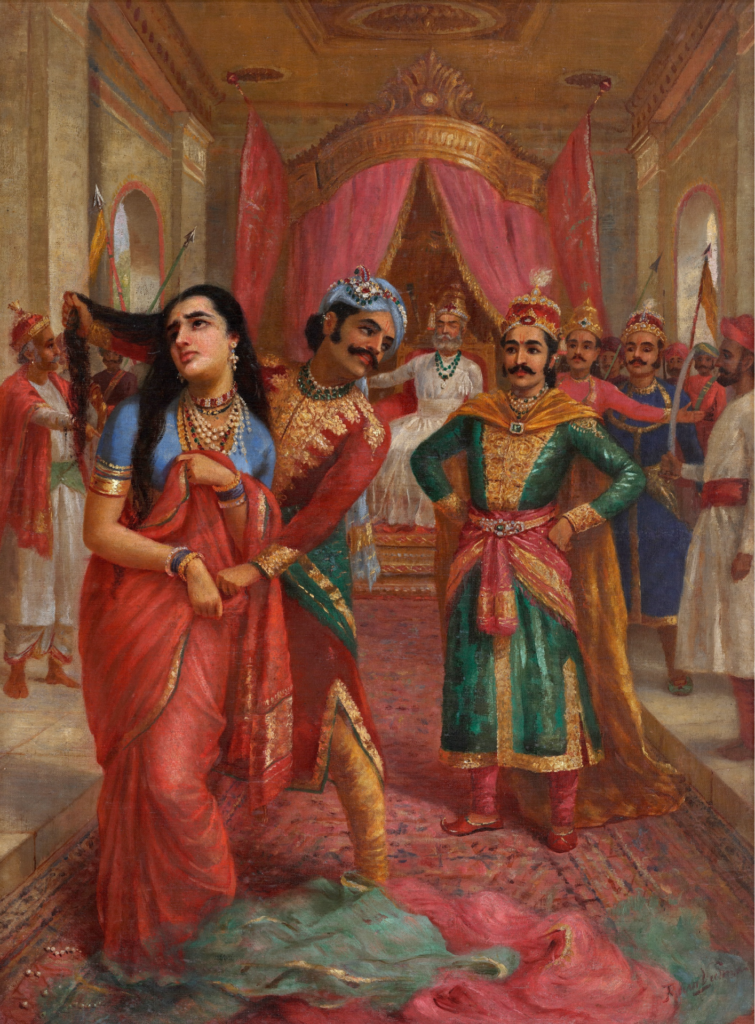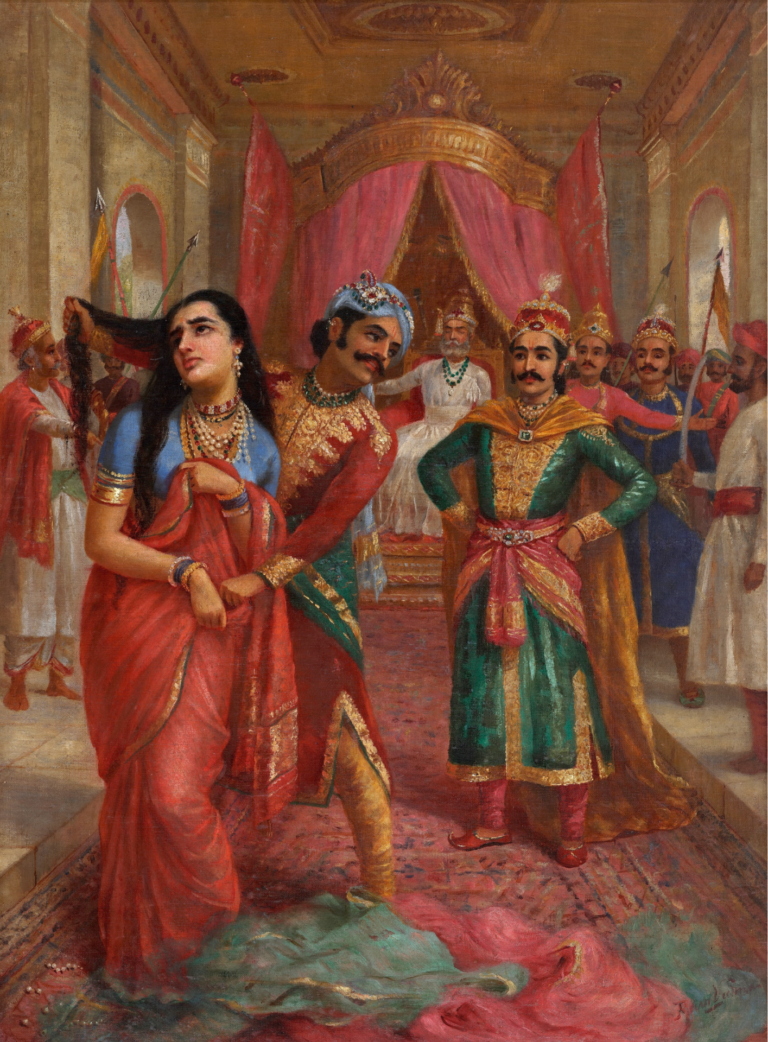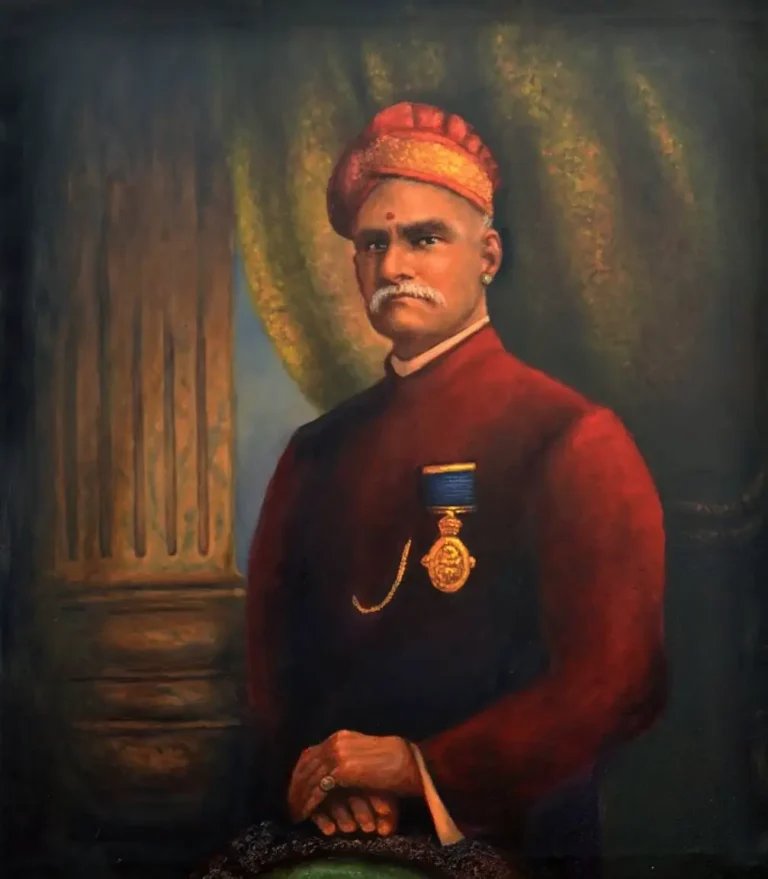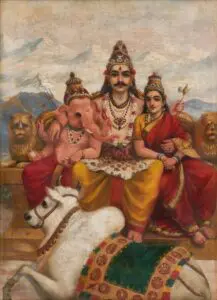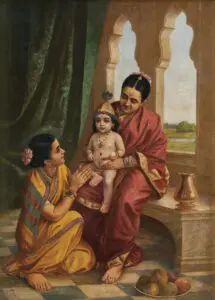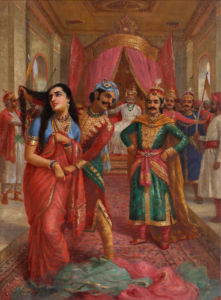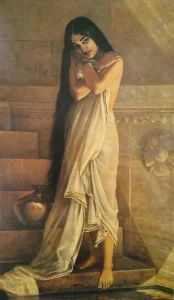Draupadi Vastraharan
Draupadi Vastraharan is a significant painting by Raja Ravi Varma, created between 1888 and 1890. This artwork captures a pivotal moment from the Indian epic, the Mahabharata, specifically the disrobing of Draupadi, the wife of the Pandavas, in the Kaurava court.
1888 - 1890
About the Artwork
The scene of Draupadi Vastraharan is one of the most pivotal and emotionally charged moments from the Indian epic, the Mahabharata. It occurs during the infamous dice game orchestrated by Duryodhana, the eldest of the Kauravas, who seeks to humiliate the Pandavas and assert his dominance. In this high-stakes gamble, Yudhishthira, the eldest of the Pandavas, loses everything—his kingdom, wealth, brothers, and eventually, his wife Draupadi—to the cunning Shakuni, who rolls the dice on behalf of Duryodhana.
Draupadi is dragged into the Kaurava court by Dussasana, where she is subjected to public humiliation. Despite her desperate pleas and questions about the legality of her being wagered after her husband had already lost himself, her cries fall on deaf ears. Egged on by Duryodhana, Dussasana attempts to disrobe Draupadi as a final act of disgrace.
In this moment of utter despair, Draupadi prays fervently to Lord Krishna, invoking his protection. Miraculously, as Dussasana pulls at her sari, it extends endlessly, frustrating his efforts and preserving her dignity. This divine intervention by Krishna highlights the themes of faith, divine justice, and the ultimate triumph of dharma over adharma. The incident serves as a turning point in the epic, sowing the seeds for the eventual Kurukshetra War that would decide the fate of the Kauravas and Pandavas.
Raja Ravi Varma’s depiction of this scene is a masterful blend of drama and emotion. Draupadi’s anguish, Dussasana’s brutality, and Krishna’s divine protection are portrayed with remarkable detail and sensitivity, making it one of Varma’s most iconic and culturally resonant works. The painting not only immortalizes this critical episode but also underscores the enduring themes of honor, morality, and divine justice in Indian mythology.




